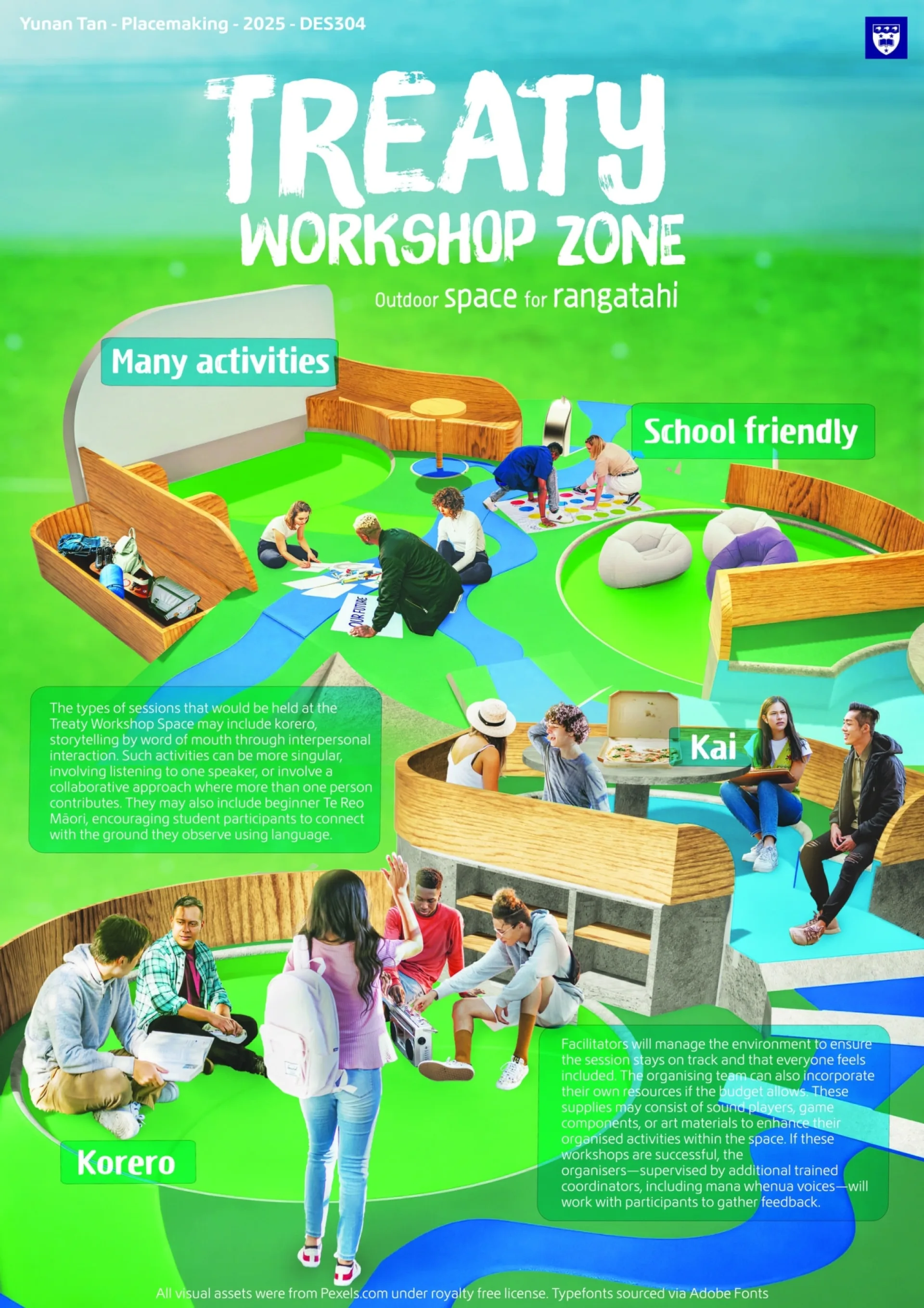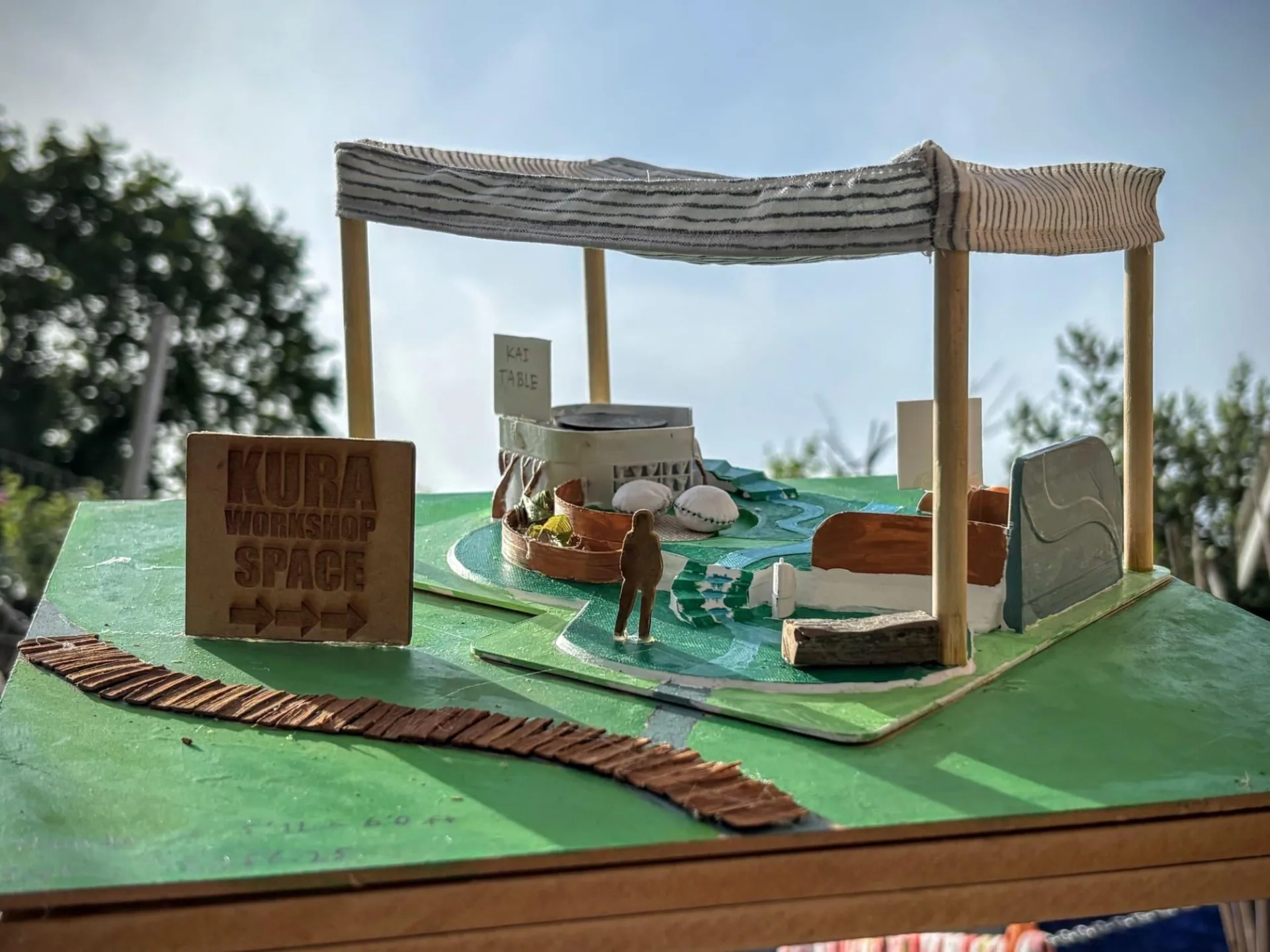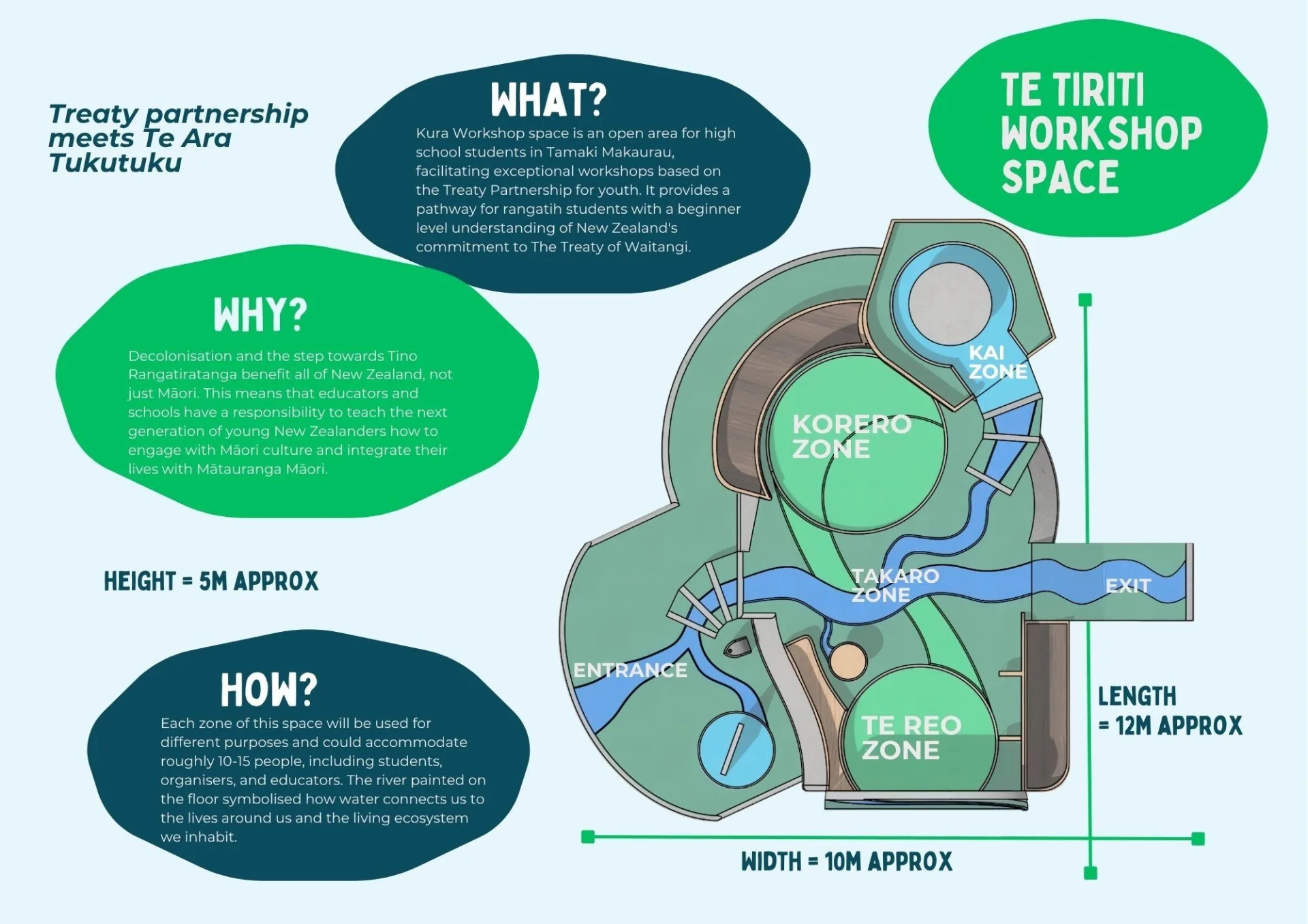

Treaty partnership, or Te Tiriti, is not of the past; in fact, this commitment in Aotearoa is now more relevant than ever. To address the inequality in this country, Te Tiriti must be held by both the government and by the people of all backgrounds willing to embrace this vision of the future. One way to tackle this significant endeavour is to conduct workshops, and there is no better place to hold them than in Te Ara tuktuku, the perfect outdoor setting, established with care and aroha for the whenua.
The most open-minded demographic would be rangatahi, aged 13 to 16, a time in youth just before the pressure of exams, when they can participate in extracurricular activities such as workshops.
Spaces are not just spaces. They define not only what we do, but also who we could be. What if there were such a space to spread such awareness?
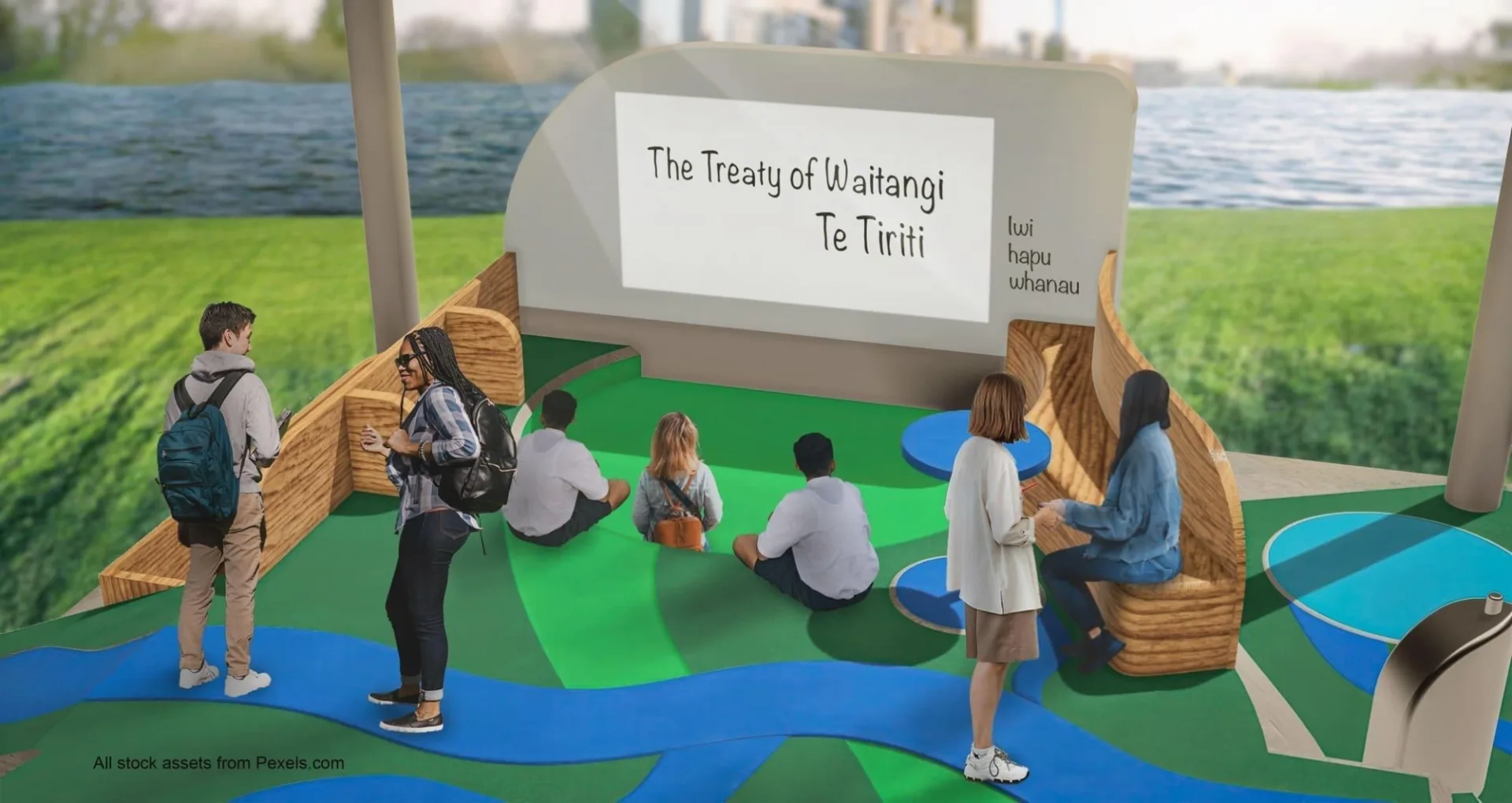
The demographic and collaborating partners for this space would include local high schools and additional organisers who are motivated to teach teenage students, including those of whakapapa, about this in a manner that caters to their preferences.
As a design from a Tangata Tiriti perspective, as a people of the Treaty, the intent of this workshop space is not to meticulously curate which activities could be held, but to ensure its viability as an open space. Therefore, a variety of activities would be held, as this is encouraged for people who actively participate to have input on what motivates students in their mahi.
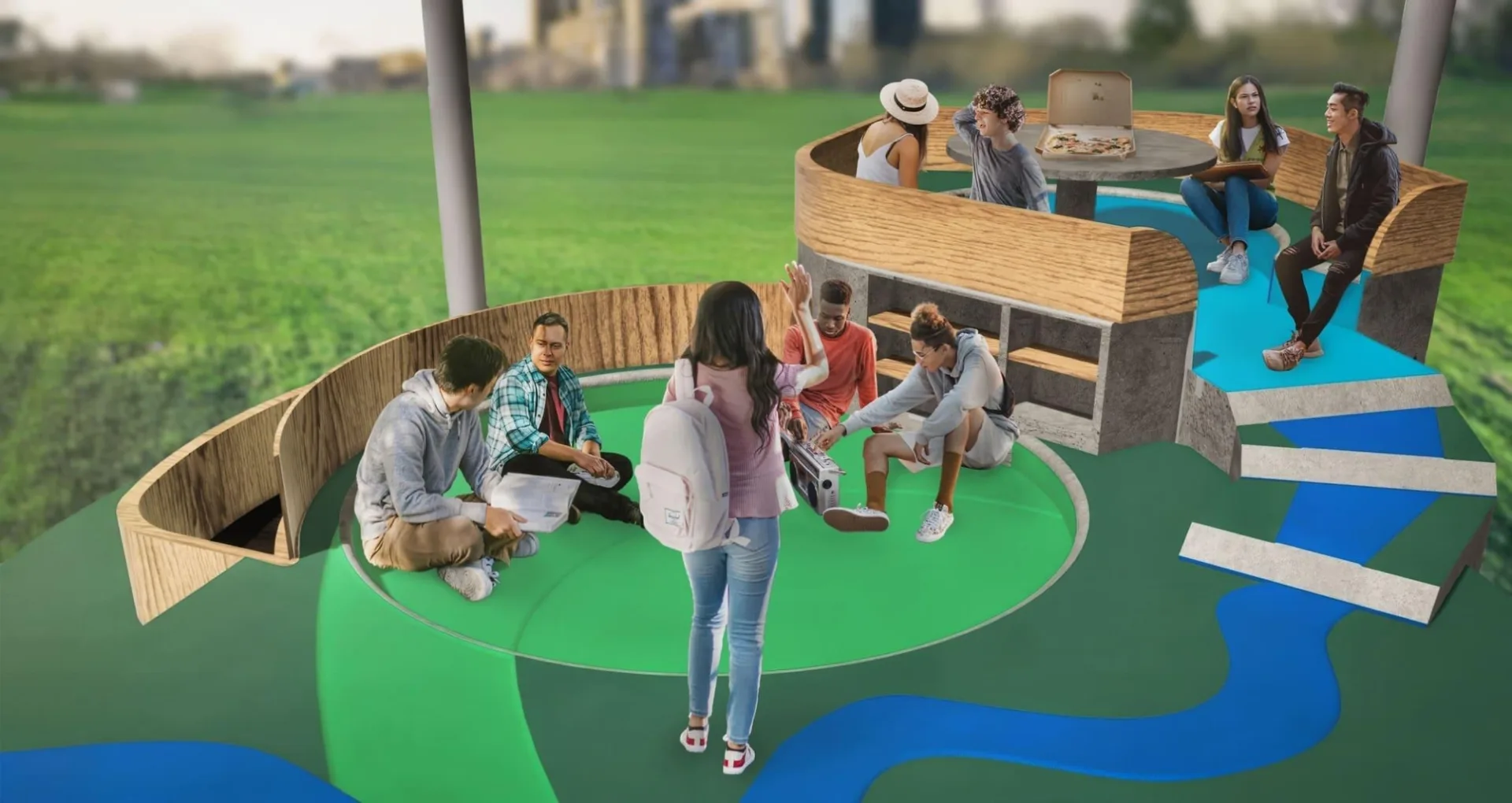
A core bodily structure of this workshop is that the design must consider how matauranga Māori differs from traditional Western educational spaces. Being outdoors is a plus, but also, the framing of learning is integral to fully visually represent this space that honours the ancestral locations of Tangata Whenua.
Because Maori knowledge was not written, oral presentations would likely be conducted throughout the course workshops byr hosts or facilitates them. So instead of desks or chairs linked up, the space was made for sitting in related open circular spaces, skin to a pond for a leaf paddy.
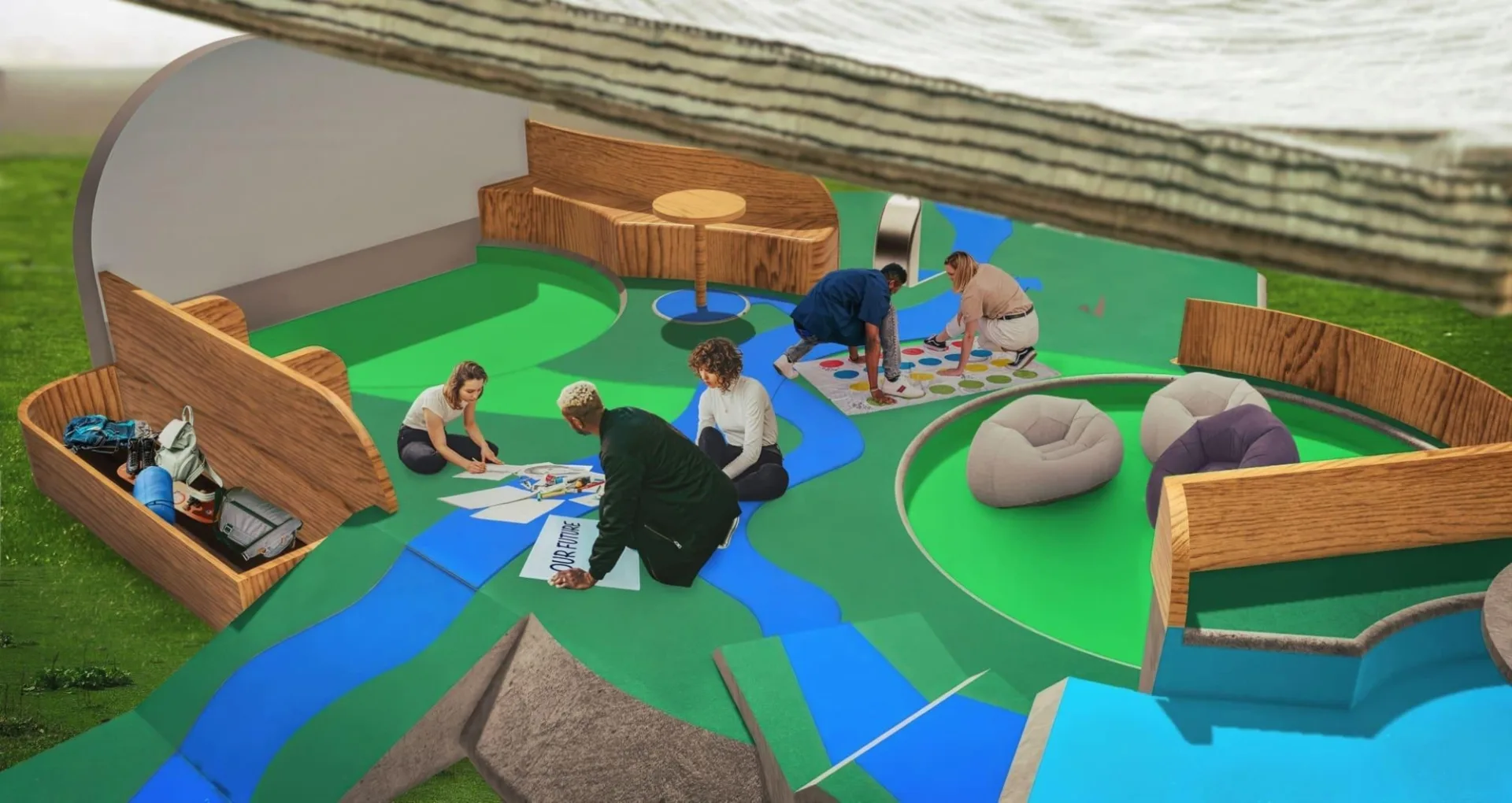
There is a constant repetition of blues and greens within the space: the imagery of the river stream symbolises the resilience of nature, particularly the relationship between water and land, and how these two elements are intertwined and inseparable. Analogs to the relationship with people and the whenua, and if they commit to a cause, they can also be as resilient as the Awa, the stream over generations.
Activity-wise, suppose facilitators want to be open and free in this workshop as part of their creative decision-making and creative process. In that case, they can commit to it, as the open spaces could also be used for various activities, such as games or performances, serving as a platform for people with unconventional ideas they want to share with a group.

